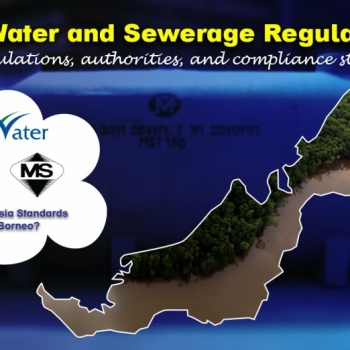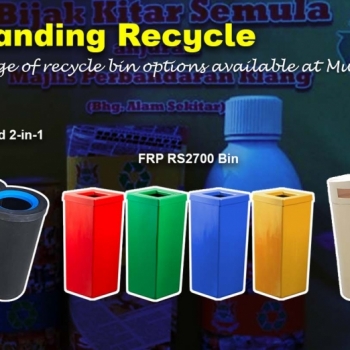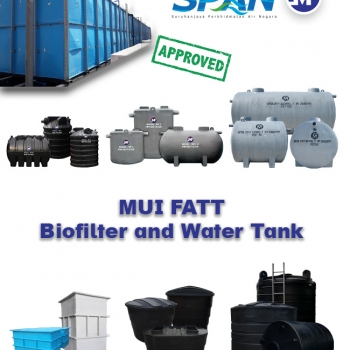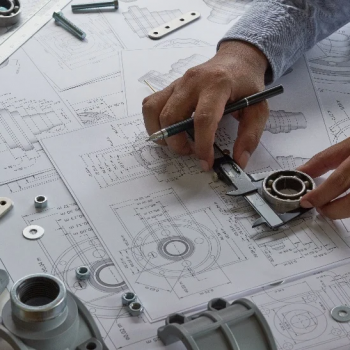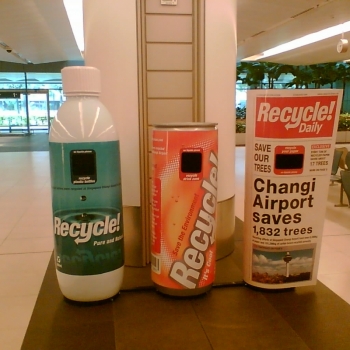Understand the regulations and guidelines for water and septic tanks in Borneo, plus compliance with SPAN, IWK, and SIRIM standards in Malaysia.
Essential Guide to Choosing the Right Water Tank for Your Needs
04 Dec 2024
Comprehensive Guide to Choosing the Right Water Tank
- Key Takeaways
- Why Choosing the Right Water Tank is Important
- Key Considerations When Purchasing a Water Tank
- Types of Water Tank Materials and Their Differences
- Different Types of Water Tanks
- Matching the Tank to Your Application
- How to Identify Your Actual Needs
- Examples of Tank Applications
- Explore Our Water Tank Solutions
- Conclusion
- Frequently Asked Questions
- What is the best material for water tanks?
- How do I determine the right water tank size?
- What are the maintenance requirements for water tanks?
- Can I use the same tank for potable and non-potable water?
- What are common misconceptions about tank materials?
- Why is expert advice crucial in determining tank size?
- What are the benefits of proactive water tank maintenance?
Key Takeaways
- Understand why selecting the right water tank is crucial for cost efficiency and meeting storage needs.
- Learn how to measure your installation area accurately to avoid sizing issues.
- Explore the key factors affecting material selection, including durability and maintenance.
- Gain insights into the differences between FRP and PE tanks, their types, and specific applications.
- Discover how Mui Fatt’s high-quality water tanks cater to various needs, from domestic to industrial use.
Do you know that the right selection of the water tank can save more than 40% of your water? Our goal here is to walk you through choosing the right water tank, including size, material, and application.
With 40 years of experience, we know FRP and PE tanks. It’s what separates our durable, certified tanks from the rest of the pack. Once you know how much water you need to store, you can make informed decisions.
Why Choosing the Right Water Tank is important?
Selecting the correct water tank ensures that your storage needs are met without overspending. A poorly chosen tank may lead to operational inefficiencies, contamination risks, or unnecessary maintenance costs. Whether for household, agricultural, or industrial use, aligning tank specifications with your intended purpose is essential. Proper planning will also help avoid space constraints and compatibility issues during installation.
Key Considerations When Purchasing a Water Tank
1. Measuring the Area
Accurate measurements are the foundation of selecting the right water tank.
-
Available Space: Use a measuring tape to determine the length, width, and height of your installation area. Consider any obstacles, such as low ceilings or nearby equipment.
-
Installation Location: The location of your tank influences its size and type.
-
Rooftops: Require lightweight tanks like FRP or smaller PE tanks.
-
Underground: Need corrosion-resistant materials and structural integrity.
-
Open Areas: Allow for larger tanks and multiple configurations.
-
2. Factors That Affect Material Selection
The material of your water tank directly affects its durability, performance, and cost.
-
Durability: FRP tanks excel in industrial environments with high mechanical stress, while PE tanks are better for household use due to their affordability.
-
UV Resistance: FRP tanks offer superior UV protection, making them ideal for outdoor use. PE tanks are UV-treated, which enhances their resistance to ultraviolet (UV) rays.
-
Chemical Resistance: FRP is better suited for storing chemicals, whereas PE handles general-purpose water storage.
-
Longevity and Maintenance: FRP tanks generally last longer with minimal maintenance, while PE tanks are easier to clean but may require more frequent inspections.
Types of Water Tank Materials and Their Differences
FRP (Fiberglass Reinforced Plastic) Tanks
FRP tanks are known for their high strength-to-weight ratio and exceptional resistance to harsh environments.
-
Advantages:
-
Strong yet lightweight
-
Modular design for scalability
-
Withstands extreme temperatures and chemical exposure
-
-
Applications:
-
Industrial facilities storing chemicals
-
Rainwater harvesting systems in commercial setups
-
PE (Polyethylene) Tanks
PE tanks are a popular choice for their affordability and versatility.
-
Advantages:
-
Cost-effective and lightweight
-
Seamless construction reduces leak risks
-
Impact-resistant and suitable for various climates
-
-
Applications:
-
Domestic potable water storage
-
Rainwater harvesting in residential areas
-
Different Types of Water Tanks
1. Open-Top Tanks
Open-top tanks are practical for applications requiring easy access.
-
Advantages:
-
Simple to clean and refill
-
Ideal for storing non-potable water
-
-
Applications:
-
Temporary water storage
-
Aquaculture systems and food processing
-
2. Closed-Top Tanks
Closed-top tanks are designed for secure and contamination-free storage.
-
Advantages:
-
Prevents debris and pollutants from entering
-
Suitable for long-term water storage
-
-
Applications:
-
Potable water storage
-
Rainwater harvesting systems
-
3. Sectional Panel Tanks
These modular water storage tanks are ideal for large-scale installations.
-
Advantages:
-
Customizable to fit space and capacity needs
-
Designed for high-capacity applications
-
-
Applications:
-
Municipal water storage
-
Industrial facilities requiring significant water storage
-
Matching the Tank to Your Application
To select the perfect tank, align its features with your intended use:
-
Domestic Use: A PE closed-top tank ensures safe potable water storage.
-
Industrial Use: FRP sectional panel tanks are robust enough to handle chemical and large-volume water storage.
-
Temporary Use: Both FRP and PE open-top tanks are ideal for short-term storage needs.
How to Identify Your Actual Needs
Determine your residential water storage tank requirements by evaluating your water needs.
-
Water Demand: Calculate daily usage for your household or industry to decide the tank size.
-
Environmental Factors: Consider UV exposure, potential chemical contamination, and installation constraints.
-
Water Quality: For potable water, ensure the tank material is food-grade and safe for human consumption.
Examples of Tank Applications
-
FRP Open-Top Tanks: Ideal for fish farms and aquaculture setups.
-
PE Closed-Top Tanks: Perfect for storing rainwater in residential areas.
-
Sectional Panel Tanks: Used in municipal systems for high-capacity water storage.
Explore Our Water Tank Solutions
Find the perfect tank for your needs:
-
FRP Water Tanks (Open-Top) - Durable and lightweight, these tanks provide easy access for cleaning and filling. Perfect for temporary storage, aquaculture, and food processing industries.
-
FRP Water Tanks (Closed-Top) - Designed for secure, contamination-free storage, these tanks are ideal for potable water and industrial applications(chemical, high-capacity water storage, etc.) requiring long-term reliability.
-
PE Water Tanks (Open-Top) - Cost-effective and versatile, these tanks are easy to handle and suitable for temporary water storage, gardening, and non-potable uses.
-
PE Water Tanks (Closed-Top) - Seamlessly constructed for secure water storage, these tanks are perfect for domestic and small-scale industrial use, particularly rainwater harvesting.
-
FRP Sectional Panel Tanks - Modular and robust, these high-capacity tanks are tailored for large-scale water storage in municipal, industrial, and commercial applications.
Conclusion
Choosing the right water tank requires careful consideration of your application, space, and budget. By understanding the differences in material, type, and size, you can make an informed decision that ensures long-term efficiency and reliability.
Need help selecting the perfect tank? Contact our sales representatives today via WhatsApp or email at sales@muifatt.com.my to explore our solutions and find the best match for your requirements.
Frequently Asked Questions
What is the best material for water tanks?
The best material depends on your specific needs:
-
FRP (Fiberglass Reinforced Plastic): Ideal for industrial and commercial use due to its strength, durability, and resistance to corrosion and chemicals.
-
PE (Polyethylene): Suitable for domestic and small-scale industrial applications because of its affordability, impact resistance, and seamless construction.
How do I determine the right water tank size?
To determine the appropriate size:
-
Assess daily water usage: Calculate based on the number of people, appliances, and equipment in use.
-
Evaluate storage needs: Consider factors like water source reliability, peak usage times, and seasonal demands.
-
Measure available space: Ensure the tank will fit the installation area, whether a rooftop, underground, or open site.
What are the maintenance requirements for water tanks?
Regular maintenance ensures longevity and hygiene:
-
Cleaning: Open-top tanks need periodic cleaning to prevent algae and sediment buildup.
-
Inspection: Check for cracks, leaks, and structural integrity.
-
Sealing and Repairs: For FRP tanks, promptly seal any minor cracks to prevent leaks.
-
Replace parts as needed: For sectional panel tanks, monitor the panels and bolts for wear.
Can I use the same tank for potable and non-potable water?
It’s not recommended to use the same tank for potable and non-potable water due to contamination risks. Always separate storage to ensure the safety of drinking water. If unavoidable, the tank must be thoroughly cleaned and disinfected before switching purposes.
What are common misconceptions about tank materials?
-
PE tanks are weak: In reality, PE tanks are highly impact-resistant and durable.
-
FRP tanks are too expensive: While the upfront cost may be higher, their long-term durability and resistance to damage make them cost-effective.
-
All tanks are UV-resistant: Not all tanks are equally resistant; ensure the material is suitable for outdoor use if required.
Why is expert advice crucial in determining tank size?
Experts provide valuable insights on:
-
Optimal capacity: Based on your specific application and usage patterns.
-
Material selection: Ensuring durability and compliance with industry standards.
-
Installation requirements: Advising on suitable site preparation and space utilization.
What are the benefits of proactive water tank maintenance?
Proactive maintenance prevents costly repairs and ensures:
-
Longevity: Extending the life of your tank by addressing minor issues early.
-
Safety: Maintaining water quality by preventing contamination and buildup of harmful substances.
-
Efficiency: Ensuring uninterrupted water storage for your needs.
Disclaimer:-
The content on this site is for general information and entertainment purposes and does not constitute legal counsel. We strive to keep our information as accurate as possible. However, we make no warranties about the completeness, accuracy, reliability, suitability, or availability with respect to the information contained on this page. You should rely on this information at your own risk. This website may include links to other third-party sites. These links are provided as a convenience to you as a reader, user, or browser only. We make no representation, warranty, or guarantee, nor do we endorse or take responsibility for any of the content of such sites.
Stay in touch with us if you’re interested in hearing from us promptly.
- Website - https://www.muifatt.com.my/home/
- Facebook - https://www.facebook.com/muifattmarketing
- Instagram - https://www.instagram.com/muifattmarketing/
- Google - https://goo.gl/maps/WxVY13gNcaRTS7Jp6
- Youtube - http://www.youtube.com/@MuiFattMarketing
- TikTok - https://www.tiktok.com/@muifattmarketing
- LinkedIn - https://www.linkedin.com/company/mui-fatt-marketing-sdn-bhd-
- Linktree - https://linktr.ee/muifattmarketing
- Shopee - https://www.shopee.com.my/muifattmarketing
- Lazada - https://www.lazada.com.my/shop/mui-fatt-marketing
Recent Blog
Understanding Recycle Bins: Types, Uses, and Regulations in Malaysia
Learn the differences between recycle and recycling bins, the types of bins by color and material, and why they're essential for waste management in Malaysia. Discover our FRP and PE recycle bins for your needs.
Why SPAN-Approved Water and Septic Tanks Are Essential for Your Project
In this blog, we explore why using SPAN-approved water and septic tanks is critical for compliance, safety, and reliability in construction projects across Malaysia. Learn how SPAN certification ensures the quality of your tanks, and why it’s essential for maintaining water service standards under Act 655. Discover how various end-user products such as water tanks and septic tanks adhere to this legislation and the consequences of non-compliance, emphasizing the importance of strict adherence for safeguarding Malaysia's water resources and public well-being.
Unleash the Potential of Architectural Color Preservation with Unsaturated Polyester Resin Coatings
Discover our advanced UPR protective coatings, expertly designed to safeguard architectural structures and preserve color pigments. Explore the application process, benefits of reinforcement, various UPR types, and other methods for maintaining vibrant colors in architectural designs.
The Role of Industrial Design in Creating Visually Appealing and Functional Products
Discover the world if industrial design, where creativity meets functionality. Learn how industrial designers shape the form and usability of products across industries. Explore the process, trends, and importance of industrial design in creating innovative and user-centered solutions.
Enhancement of Waste Management System
The three main components of a waste management system are trash bins, recycling bins and dumpsters.
